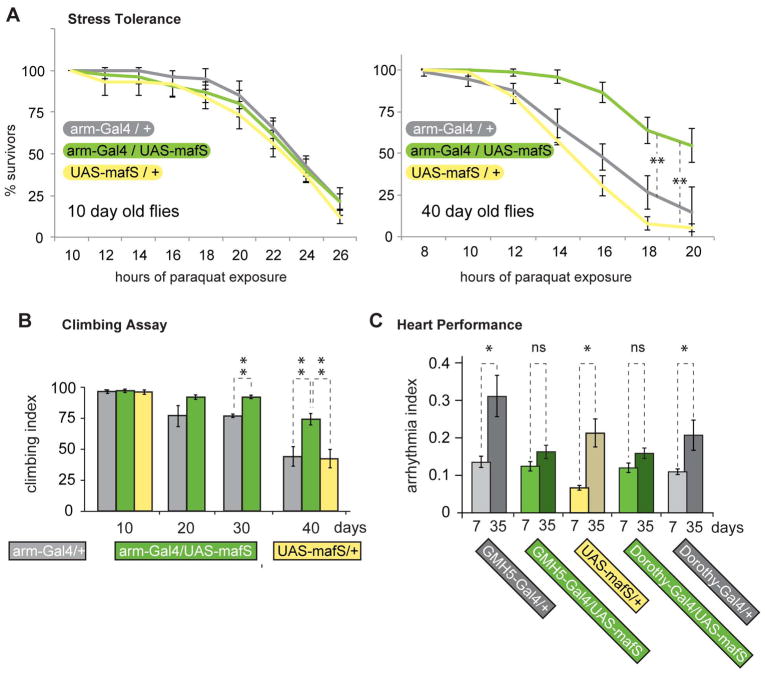Figure 3. MafS over-expression counteracts the loss of stress resistance, motor function, and heart performance in aging flies.
A. Ubiquitous over-expression of MafS increases paraquat resistance in old, but not in young flies. Flies of different ages over-expressing MafS (arm-Gal4 / UAS-mafS) or controls carrying the driver or the UAS construct alone (arm-Gal4/+ and UAS-mafS / +) were treated with paraquat and their survival was recorded over a period of up to 26 hours, as detailed in Experimental Procedures. Percent survival over time is plotted for each genotype. Error bars indicate standard deviations of three biologically independent replicates (each with a cohort of ~25 flies) in which flies were collected from separate crosses. Statistical significance was calculated by two-way ANOVA using Qi Macros software. The two asterisks represent p-values less than 0.003.Note that the protective effect of MafS overexpression in old flies is evident and statistically significant relative to both controls, the driver or the UAS construct alone. This indicates that the effect is not influenced by different genetic backgrounds.
B. MafS expression delays the loss of motor function in aging flies. 10, 20, 30 and 40 day old flies of the genotypes arm-Gal4/+, arm-Gal4 / UAS-mafS and UAS-mafS/+were scored for their climbing ability as described in Experimental Procedures. This assay detected no difference between the three genotypes when young flies were tested. Older arm-Gal4 / UAS-mafS flies, however, performed better than the two control groups of matched ages, with progressively larger differences. Error bars indicate standard deviations of three biologically independent replicates. Statistical significance was calculated using two-way ANOVA. The asterisks represent p-values less than 0.002.
C. MafS expression ameliorates the age-associated decline in heart performance. Heart rhythmicity was analyzed in young flies (7 days after hatching) or in 35-day-old flies of the indicated genotypes. In control flies (Gal4 drivers or UAS-mafS transgene alone, grey bars) the heartbeats became irregular with age, i.e. the arrhythmia index increased, as previously reported (Ocorr et al., 2007). In contrast, overexpression of MafS, either in the myocardium (GMH5-Gal4 / UAS-mafS), or in the pericardial cells (Dorothy-Gal4 / UAS-mafS) prevented the decline in cardiac performance as manifested by an incremental, not statistically significant increase of age-associated arrhythmias (green bars).

